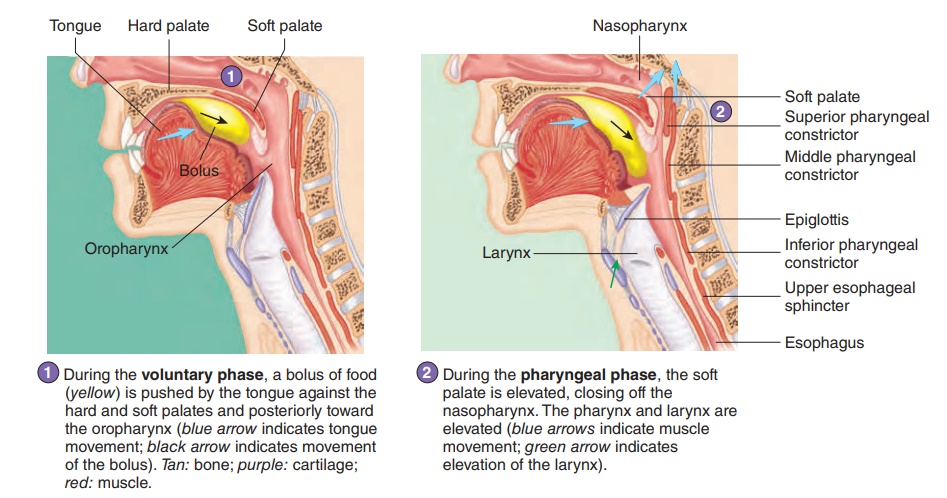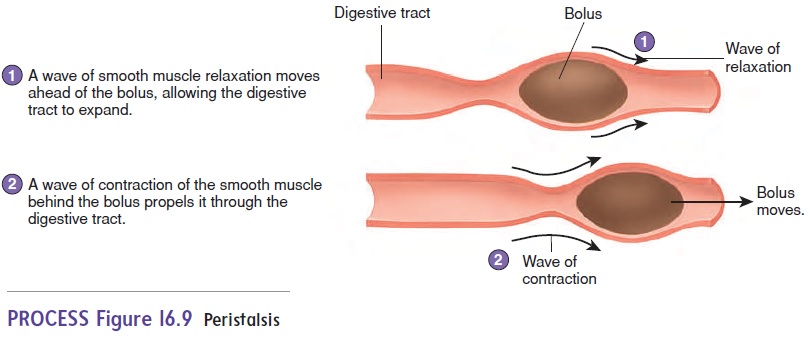Chapter: Essentials of Anatomy and Physiology: Digestive System
Swallowing - Digestive System

Swallowing
Swallowing, ordeglutition(d̄e-gloo-tish′̆un), can be divided intothree phases: the voluntary phase, the pharyngeal phase, and the esophageal phase (figure 16.8). During the voluntary phase, a bolus, or mass of food, is formed in the mouth. The bolus is pushed by the tongue against the hard palate, forcing the bolus toward the posterior part of the mouth and into the oropharynx.


The pharyngeal phase of swallowing is a reflex that is initi-ated when a bolus of food stimulates receptors in the oropharynx. This phase of swallowing begins with the elevation of the soft palate, which closes the passage between the nasopharynx and oropharynx. The pharynx elevates to receive the bolus of food from the mouth. The three pharyngeal constrictor muscles then contract in succession, forcing the food through the pharynx. At the same time, the upper esophageal sphincter relaxes, and food is pushed into the esophagus. As food passes through the pharynx, the vestibular and vocal folds close, and the epiglottis (ep-i-glot′ is; upon the glottis, opening of the larynx) is tipped posteriorly, so that the opening into the larynx is covered. These movements prevent food from passing into the larynx.

The esophageal phase of swallowing is responsible for moving food from the pharynx to the stomach. Muscular con-tractions of the esophagus occur in peristaltic (per-i-stal′ tik; peri, around+ stalsis, constriction)waves(figure 16.9). A waveof relaxation of the esophageal muscles precedes the bolus of food down the esophagus, and a wave of strong contraction of the circular muscles follows and propels the bolus through the esophagus. Gravity assists the movement of material, espe-cially liquids, through the esophagus. However, the peristaltic contractions that move material through the esophagus are suf-ficiently forceful to allow a person to swallow even while doing a headstand or floating in the zero-gravity environment of space. The peristaltic contractions cause relaxation of the lower esopha-geal sphincter in the esophagus as the peristaltic waves approach the stomach.
Related Topics